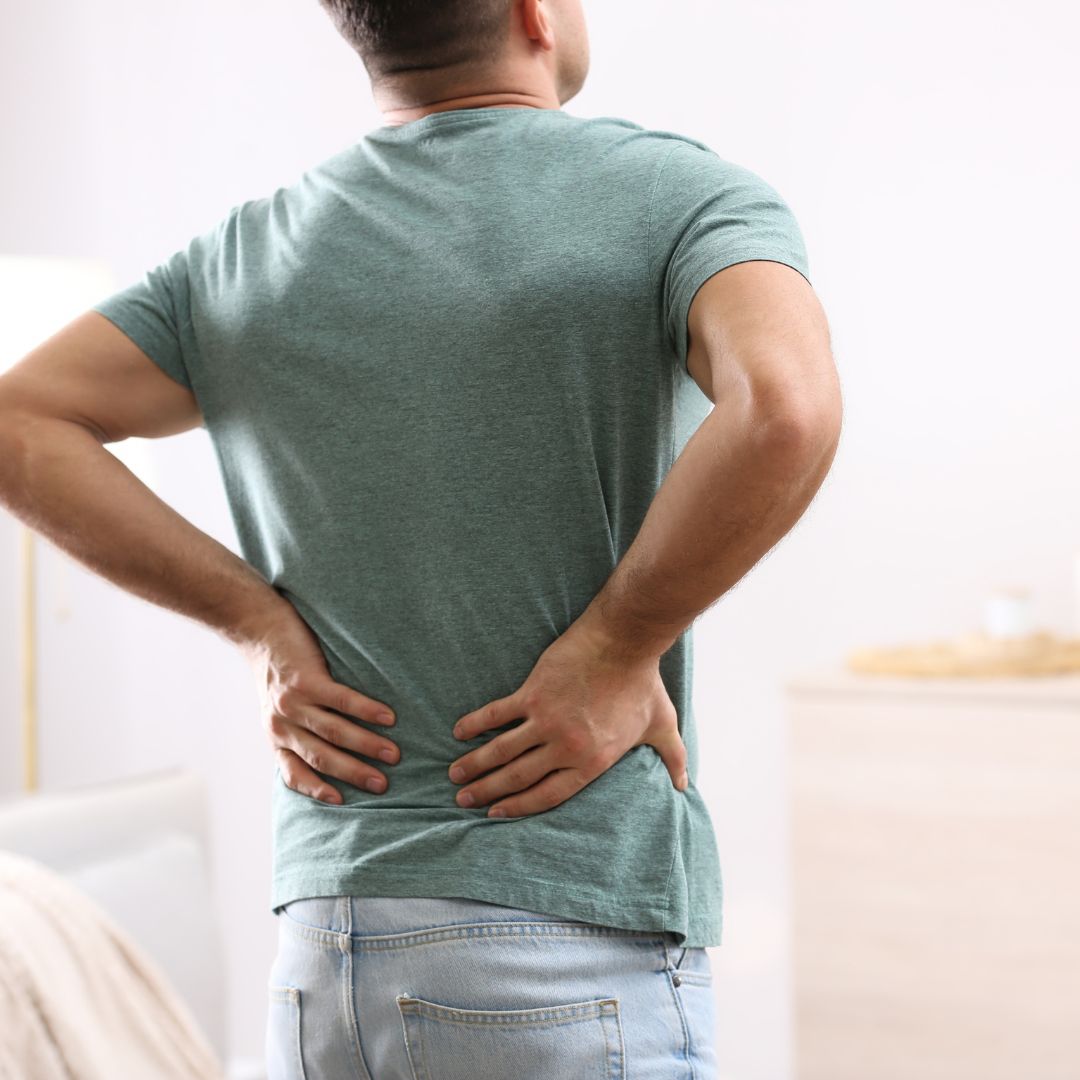
Three questions that we always get asked about back pain, and the most common back injuries that we treat
1 October 2024
Georgie Mai-Manning
Clinic Director
We are often asked what the most common complaint that we treat is, and people aren’t surprised that it is of course the myriad of conditions that sit under the general ‘back pain’ umbrella. Around 60% of our patients are here because of some form or back pain or another and this isn’t surprising, when statistics show that over 10 million working days are lost annually through back pain, and 27% of the UK population are suffering with back pain each day.
October 7th – 12th is Back Care Awareness week, and so this is the perfect time to answer the top three questions that we get asked about back pain, and also to look at the most common back conditions and injuries that we treat here at the Rehab Hub.
The top three questions that we get asked about back pain are:
- How do I make my back pain go away for good?
- How long will it take to recover from my back pain?
- If there’s one thing I can do to lower my risk of back pain and stop it flaring up, what is it?
You can jump straight to the answers, but we feel it’s important to explain why back pain so complex, and you might like to read about your particular type of back pain.
The most common type of back pain that we treat – injuries to the muscles, tendons and ligaments that support your spine
The most common type of back pain that we see at the Rehab Hub is what’s known within healthcare as ‘non-specific’ , which can sound like a rather unhelpful term! It means that the pain is not attributable to a recognisable, specific pathology such as an infection, tumour or fracture. Instead, it is likely due to a sprain or strain within the soft tissues of your body – muscles, tendons, ligaments etc, and it normally involves multiple structures.
This type of back pain isn’t visible on imaging and so instead, we make our diagnosis and form our treatment pathway through physical testing, observation and questioning. This helps us understand the cause of your pain, what structures are involved, the severity or ‘grade’ of your issue, and how we can treat and rehabilitate you.
This type of back pain can be sudden (acute), or chronic (where it’s been going on for more than three months), or what is called ‘acute on chronic’ (reoccurs in episodes and is identifiable as ‘your familiar’ back pain.
The second most common type of back pain that we treat – Sacroiliac Joint Pain
Sacroiliac joint dysfunction is a term used to describe the pain of the sacroiliac joint (SI joint). You have two sacroiliac joints at the base of your spine where it meets your pelvis. SIJ pain is often seen in people who have either excessive movement such as hypermobility, stiffness, or malalignment of the sacroiliac joint and can also be referred to as ‘sacroiliac joint dysfunction’.
People who suffer from SIJ issues can believe that they have general low back pain – in fact, it is often misdiagnosed, but the treatment and rehabilitation is very different and should be clearly understood to help you most effectively.
SIJ problems are generally chronic, with acute flare-ups. Identifying the true cause of the issue and stabilising that, alongside lots of patient education and support is needed to help you limit the risk of painful episodes. Patients who recover most effectively from SIJ issues are those who wholly embrace lifestyle changes and commit to fully understanding the nature of their condition.
Injuries to the vertebral discs in your spine
Discogenic pain is a form of low back pain, caused by chemically or mechanically damaged intervertebral discs. The discs in your spine have a gelatinous core and provide cushioning to the spinal column. These can become damaged in a traumatic event, but it is very common to see deterioration due to ageing – which is totally normal.
The symptoms of lumbar discogenic afflictions are not experienced in the exact same way by every patient. Most patients often report pain radiating into the buttock and the leg accompanying their back pain, but everyone has their own pain nature.
Despite being horribly painful, most vertebral disc problems are relatively ‘low grade’ in severity and diagnosed through simple physical testing in clinic. Disc issues are visible on imaging, but this is most not often required unless we suspect a sinister or high-grade pathology, or your symptoms aren’t stabilising after time.
Radiculopathy (nerve pain)
The most common type of nerve pain in conditions of the low back is sciatica (posterior thigh), closely followed by femoral (anterior thigh) nerve pain. Radiculopathy refers to pain radiating along the course of the nerve, from either the low back or buttock, to one or both legs. It is often accompanied by neurological deficits, muscle weakness, and sensory disturbances such as pins and needles, and numbness.
If you have ever experienced radiculopathy, you will know quite how awful and fatiguing it can be. It can feel as though the nerve is ‘trapped’ or ‘pinched’ – this doesn’t happen, but it is a common way to visualise the cause of the pain that is felt, and the disruption to motor control and feeling.
The three most common questions that we get asked about back pain are:
How do I make my back pain go away for good?
Given the complexity of this broad spectrum of back pain problems, it really is very important to partner with a musculoskeletal professional such as a physiotherapist, osteopath, or sports therapist to identify the true causes of your pain. First and foremost, choose somebody that you like and trust – they will get to know you, your lifestyle and your goals, and have a really good understanding of what is needed to help you.
Depending on your diagnosis, you may require a blend of ‘hands-on’ manual therapy treatment, an exercise programme that is achievable and scalable, advice such as pacing your daily activities, work guidance and gym and exercise modification. It sounds like a bit of hard work and commitment doesn’t it! If you work with the right person, you’ll have a plan that suits you and you’ll know where you’re going and what you need to do to get there.
How long will it take to recover from my back pain?
The length of your recovery will depend upon the cause and nature of your back pain, and many variables such as your age, general health, activity levels etc. Muscular and ‘soft tissue’ injuries do heal more quickly than discs and nerves – however, there is no correlation between healing and the pain that individuals feel. It is different for everyone, but working with a professional experienced in back pain recovery will be able to provide you with guidance based on their clinical opinion and keep you motivated along the way.
If there’s one thing I can do to lower my risk of back pain and stop it flaring up, what is it?
Your spine needs to be able to move easily so you can go about your life with comfort and strength. It is literally at the centre of all movement, so when your spine becomes restricted through sitting at a desk for long periods or driving a car, or conversely – if there is excessive movement through repetitive tasks leading to strength imbalances, you could experience any of the back conditions that we have been talking about.
Therefore, if you can do one thing – we would advise you to enjoy a schedule of activity to help you move more and balance out your repetitive tasks throughout your week. Regular movement can also help support good mental health by releasing endorphins (your feel-good hormone). We see that conditions such as anxiety, stress and depression can all be improved through regular exercise and movement, and that in turn reduces the pain experience.
How we can help you
Our physiotherapy, sport therapy and osteopathy team can support you whichever type of back pain you are experiencing, and whatever your daily activities and goals. You may need some help getting started with devising a programme of exercise that suits you, is enjoyable, and fits into your life. We would love to help you with that, so do please reach out!

